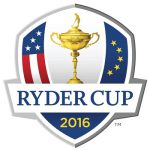 The 41st edition of the Ryder Cup is all but set to tee off at the Hazeltine National Golf Club in Chaska, Minnesota, from September 30 to October 2.
The 41st edition of the Ryder Cup is all but set to tee off at the Hazeltine National Golf Club in Chaska, Minnesota, from September 30 to October 2.
The intercontinental golf tournament, held every two years, alternates its venue between courses in the United States and Europe. It pairs an American team against a European one, each with 12 men. The teams consist of nine players that qualify based on predefined criteria and three chosen by a non-competing captain.
The winning team gets to keep the Ryder Cup, a gold trophy that was donated in 1927 by English businessman Samuel Ryder and stands 17 inches tall, 9 inches wide and weighs 4 pounds.
Even though the Ryder Cup awards no prize money, the tournament is one of the most hotly contested in golf due to the pride it conveys to make the team and the bragging rights granted to those that get to keep the trophy.
This year the European captain is Darren Clarke, from Northern Ireland, who will have to deal with the challenge of having six Ryder Cup “rookies” in his team. The 48-year-old has won 22 tournaments, none bigger than his victory at the 2011 Open Championship at the Royal St George’s Golf Club in England.
Team Europe players are: Englishmen Danny Willett, Chris Wood, Andy Sullivan, Matt Fitzpatrick and Justin Rose along with Spaniard Rafa Cabrero-Bello. The other players that qualified are Spain’s Sergio García, Northern Ireland’s Rory McIlroy and Sweden’s Henrik Stenson.
The wild cards, or players chosen by the captain are: England’s Lee Westwood, who is playing this tournament for the tenth time in his career; Germany’s Martin Kaymer, who is in this tournament for the fourth time in a row and Belgium’s Thomas Pieters who is also making his debut for team Europe at the young age of 24.
The main challenge for Europe’s team will be to find a way to win its fourth straight Ryder Cup despite a generational change that was unavoidable.
In our next article, we’ll take a look at the American team.




